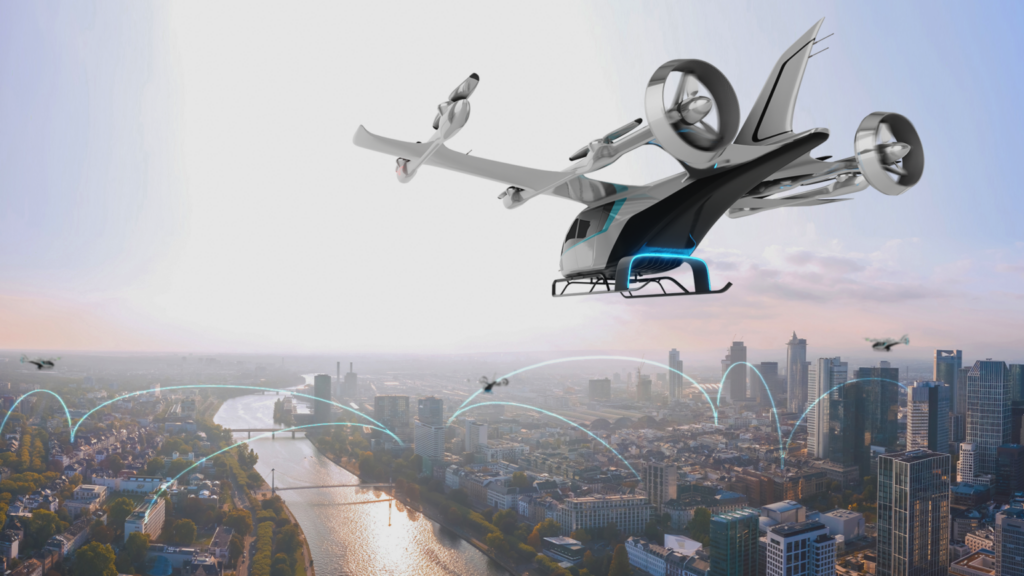
Eve has been developing urban air traffic management software, which plays a crucial role in coordinating the operations of eVTOL aircraft. (Photos: Eve)
In a recent interview with Avionics International, André Stein—Co-CEO of Eve—shared valuable insights into the company’s priorities and strategies for the upcoming year. Stein emphasized the significance of staying on track with their development and also talked about supplier selection, aircraft design, urban air traffic management software, and considerations for infrastructure.
Eve’s primary focus is ensuring steady progress. “It goes in line with the philosophy of working in building blocks—moving one step at a time so that we don’t go backwards,” he explained. Stein highlighted their longstanding relationships with suppliers, indicating that they have been in discussions for years. They are now in the final stages of supplier selection, a crucial step in defining the systems and interactions of their eVTOL aircraft.
Eve’s team recognizes the importance of key components like batteries and propellers, which form the heart of their aircraft design. “Often, we do things under the hood a lot before we decide to disclose anything to the market,” he said.
Eve’s efforts extend beyond the vehicle itself. They have been actively developing urban air traffic management (urban ATM) software, which plays a crucial role in coordinating the operations of their aircraft. Stein mentioned the upcoming deployment of a new version of the software. They plan to conduct trials this year, just as they previously performed testing in Chicago to better understand UAM operations, ground services, and the passenger journey in order to prepare for launching operations.
This past week, Eve announced the completion of its urban ATM prototype. Now, the company is starting to develop commercial solutions for urban ATM to ensure the success of integrating eVTOL aircraft and other urban air mobility vehicles.
Eve has finished propeller tests with multiple models on its propeller rig in Brazil, according to the company, which allows the team to measure aerodynamic performance and sound properties. A vertical lift rotor testing phase was also recently initiated to evaluate the performance of the rotors during the transition part of flight. “The results from the company’s recently completed wind-tunnel tests, along with the findings from the propeller and truck-mounted rig, are being used to increase the fidelity of the company’s flight simulator and fly-by-wire system,” according to Eve.
The eVTOL developer recognizes the need for collaboration with operators and infrastructure providers. Recently, they organized an infrastructure summit where stakeholders such as infrastructure providers, city representatives, and operators came together to identify gaps in the ecosystem. Eve aims to address important factors such as aircraft noise, charging infrastructure, and vertiport design. Sustainability is another key goal—“It goes beyond having a zero-emission aircraft,” Stein said.
Bringing together a comprehensive ecosystem involves ensuring that operators are prepared to receive the aircraft, that cities are ready to accommodate them, and that vertiport networks are established. Although this may not be fully realized on day one of operations, Eve is committed to charting a path toward a fully integrated ecosystem.
Certification is a major challenge for all eVTOL developers, including Eve. This encompasses not only the vehicle but also the operational aspects and manufacturing facilities. Stein acknowledges the complexity of certifying new innovations and technologies. However, Eve’s advantage lies in their experience. “We believe we have a certain edge because we’ve done that before through Embraer quite a few times,” Stein remarked, saying that they have obtained over 30 certifications in the past 25 years. They have initiated the formal certification process with the primary certification authority, ANAC (Agência Nacional de Aviação Civil), and have proposed a certification basis in line with the FAA’s requirements.
Eve remains committed to their goals and timelines. Stein emphasized that their certification efforts are progressing as planned, with the submission of the certification basis proposal to ANAC and ongoing collaboration with the FAA. This dedication ensures that Eve is on track to meet their regulatory requirements and demonstrates their readiness to bring their innovative aircraft to market.

“Wind tunnel testing provides a unique view of aerodynamic behavior of complex geometry and provides a higher level of validation of design characteristics.”
Eve’s timeline in the near-term revolves around their target of entering commercial operation by 2026. They are making progress in line with their plans, with the production of their first prototype scheduled for the second half of the year. Stein emphasized the importance of achieving technical milestones and conducting necessary tests to ensure the project’s maturity. A significant upcoming milestone is the finalization of the certification phases with ENAC. Supplier selection is another crucial milestone on their path, and they anticipate announcing key suppliers in the coming months as they work towards closing the entire supply chain throughout this year.
Stein again highlighted the importance of putting building blocks in place and focusing on the technical development of their eVTOL aircraft. Rather than simply increasing the backlog, their strategy revolves around designing the right product and ensuring that the necessary infrastructure is in place to facilitate deployment by operators. He emphasizes that the challenge extends beyond aircraft certification; it involves the comprehensive development of an entire ecosystem. “It’s a revolution that goes beyond just a new type of aircraft, which by itself is a massive achievement. This whole ecosystem development is where we need to focus—not only Eve, but as an industry.”
Eve announced this past month that the team had completed wind tunnel testing of its eVTOL in Switzerland using a scale model. This validated the in-flight performance of components such as rotors, wing, tail, and fuselage. “The information we obtained during this phase of development has helped us further refine the technical solutions of our eVTOL before committing to production tooling and conforming prototypes,” commented Luiz Valentini, CTO at Eve, on the announcement.